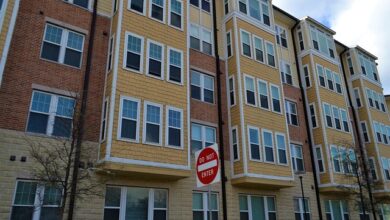How to Get Homeowners Insurance for a Listed Building in the UK

Owning a listed building in the UK is an extraordinary privilege, as these properties are often steeped in history and architectural significance. However, they also come with unique responsibilities, especially when it comes to insurance. Unlike standard homeowners’ insurance policies, securing coverage for a listed building requires careful consideration and specialized knowledge. This article will guide you through the process of obtaining homeowners insurance for a listed building in the UK, ensuring your property is adequately protected while meeting legal requirements.
Understanding Listed Buildings in the UK
Before diving into the specifics of insurance, it’s essential to understand what makes a listed building unique. In the UK, listed buildings are structures recognized by Historic England (or equivalent bodies in Scotland, Wales, and Northern Ireland) as having special architectural or historical interest. These buildings are categorized into three grades:
- Grade I : Buildings of exceptional interest, accounting for only 2.5% of all listed buildings.
- Grade II *: Particularly important buildings of more than special interest, making up around 5.5% of listed buildings.
- Grade II : Buildings of special interest, which account for approximately 92% of all listed buildings.
Listed status imposes strict regulations on alterations, repairs, and maintenance. Any changes must comply with conservation guidelines to preserve the building’s character and heritage value. Consequently, insuring such properties involves additional considerations compared to regular homes.
Why Specialized Insurance Is Necessary
Standard home insurance policies are not designed to cover the unique needs of listed buildings. Here’s why specialized insurance is crucial:
- Historical Materials and Craftsmanship : Repairs to listed buildings often require traditional materials and skilled artisans, which can be significantly more expensive than modern alternatives.
- Legal Obligations : Owners of listed buildings have a legal duty to maintain their properties in accordance with conservation standards. Failure to do so could result in fines or even prosecution.
- Higher Risk Factors : Listed buildings may face higher risks due to age-related issues like dampness, structural instability, or susceptibility to damage from natural disasters.
- Reconstruction Costs : If the worst happens and the building is damaged beyond repair, reconstructing it to its original specifications can be astronomically costly.
Steps to Obtain Homeowners Insurance for a Listed Building
1. Assess Your Property’s Value
The first step is to determine the rebuilding cost of your listed building. This differs from market value, as it reflects the expense of restoring the property using authentic materials and techniques. Consider hiring a professional surveyor experienced in historic properties to conduct a thorough assessment.
2. Choose a Specialist Insurer
Not all insurance providers offer policies tailored to listed buildings. Look for insurers specializing in heritage properties, such as Ecclesiastical Insurance, Churchill Heritage, or Hiscox. These companies understand the complexities involved and provide comprehensive coverage options.
3. Understand Key Coverage Areas
When selecting an insurance policy, ensure it includes the following:
- Structural Coverage : Protects against damage to the building itself, including walls, roofs, and foundations.
- Contents Coverage : Covers personal belongings inside the property.
- Alternative Accommodation : Provides financial support if you need temporary housing during repairs.
- Special Features : Ensures coverage for unique elements like stained glass windows, ornate woodwork, or period fireplaces.
- Conservation Compliance : Guarantees that any repairs or restorations will meet legal requirements.
4. Disclose All Relevant Information
Be transparent with your insurer about the condition of your property, its listed status, and any previous claims. Withholding information could invalidate your policy or lead to disputes in the event of a claim.
5. Review Policy Terms Regularly
Insurance needs evolve over time, particularly for older properties. Periodically review your policy to ensure it still meets your requirements and adjust coverage as necessary.
Tips for Reducing Premiums
While insuring a listed building can be expensive, there are ways to manage costs effectively:
- Improve Security Measures : Installing burglar alarms, CCTV systems, and secure locks can reduce theft risks and lower premiums.
- Maintain Good Condition : Regular upkeep minimizes the likelihood of major repairs, making you a lower-risk client in the eyes of insurers.
- Bundle Policies : Combining home and contents insurance under one provider might yield discounts.
- Increase Excess : Opting for a higher voluntary excess can decrease monthly premiums, though this means shouldering more upfront costs in case of a claim.




